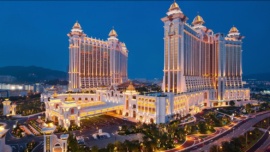In the wake of proposals by legislators Kou Hoi In, Cheang Chi Keong and Chui Sai in the Legislative Assembly to halt the construction of the Macau section of the Light Rail Transport system, to avoid increasing traffic on the Macau Peninsula, criticism and questions arose at local broadcaster TDM’s Macau Forum, held yesterday, when the main topic of the LRT project was discussed.
Secretary General of the Macau Construction Association, Lo Chi Hou, complained that the LRT works had led to problems during the construction of the Taipa section of the transportation system, and urged the authorities to review these existing problems, rectify them and implement a comprehensive quality control system to avoid any significant problems happening in the future.
A local resident present at the forum proposed to the panel that the Macau side of the LRT project proceed, stating: “Macau has sufficient financial reserves. Compared to a complicated project like the Hong Kong–Zhuhai–Macau Bridge expected to be completed next year why is there such difficulty with the LRT project, which needs more time than the Bridge?” asked a resident, whose name was not mentioned.
Secretary General Lo’s response indicated that the government should let the public know the time needed to complete the project as well as providing detailed explanation in terms of planning and design.
Transportation priority
Joe Wu Chou Kit, council president of the Macau Institution of Engineers said if the authorities decided to halt the construction of the Macau section of the LRT it would be difficult to implement the public transportation priority policy.
“Without the LRT, it’s hard to restrict local people from driving their private vehicles and motorcycles. Therefore, having the LRT completed is important to controlling the traffic in the city,” Wu said.
The council president also suggested the authorities reconsider connecting the Mainland’s high-speed rail to the MSAR.
“The high-speed rail systems in Hengqin, Zhuhai, and other neighbouring regions have developed rapidly. It would be beneficial for Macau to be connected as well,” Wu added.
Secretary General Lo commented that he believes that the LRT construction project could provide an opportunity to nurture the next generation of technical personnel. With regard to a separately proposed monorail system for the Peninsula, Lo questioned whether it was necessary to use a different technical team in its development.
“Not only [does] this LRT provide us with transportation convenience in the city, it also provides an opportunity for local technical personnel to work on building a rail system and gain valuable skills,” he said.
“Macau is small. Does our city really need to have two separate rail systems with two separate teams? Society really needs to think about that,” he concluded.
Monorail system
Legislators Kou Hoi In, Cheang Chi Keong and Chui Sai had previously suggested in the Legislative Assembly (AL) that apart from the LRT the construction of a monorail system is needed for the Macau Peninsula.
Monorail tracks in other regions can currently carry about 20,000 to 30,000 passengers per hour, Secretary General Lo commented.
Council president Wu, agreeing with the idea, noted that the construction of the monorail train system could be undertaken in co-operation with the city’s gaming operators, linking casinos as destination stops and increasing the city’s tourism elements.
“The building of a monorail system in the city can also be linked to the city’s casinos. I think it’s feasible to do it. First of all, the maintenance fees could be shared by the gaming operators as well as enhancing their transpiration services for their customers,” Wu added.
Furthermore, Wu said that the construction of the monorail and LRT trains is more or less similar, although the capacity of monorail trains is less than that of the LRT.























